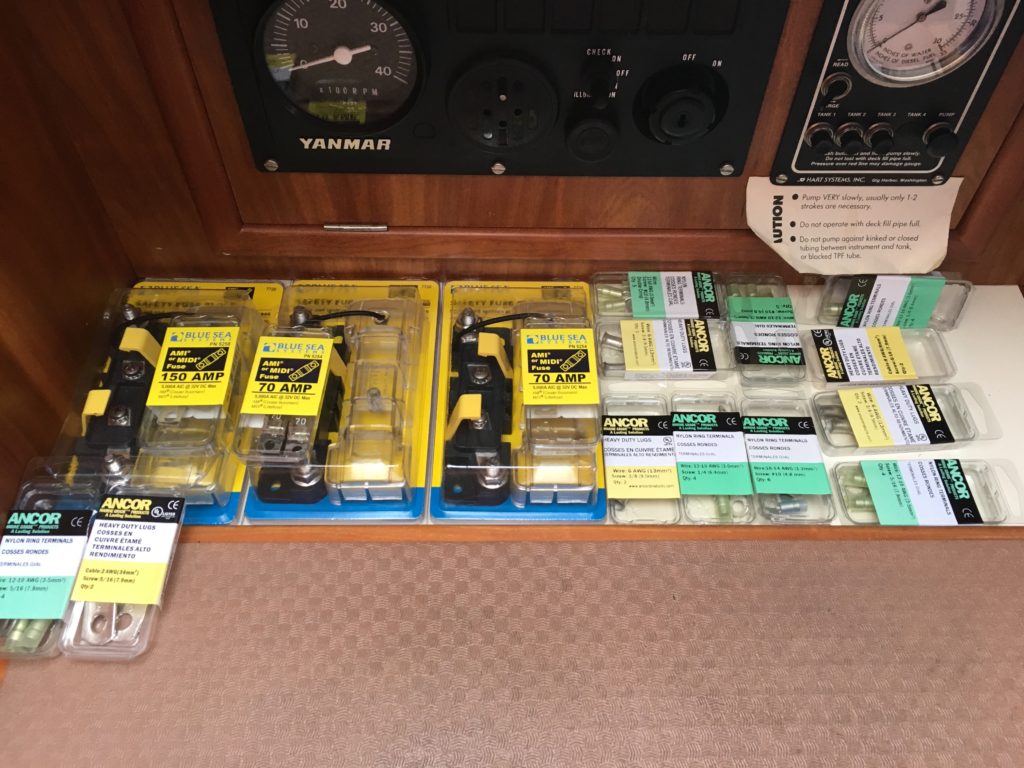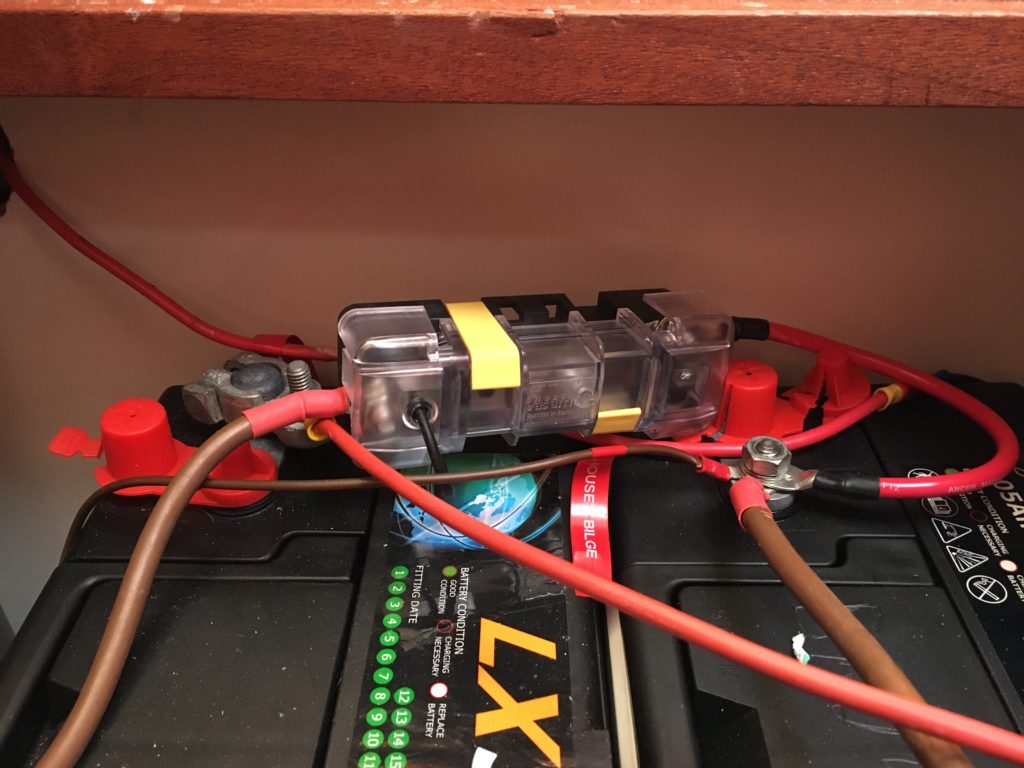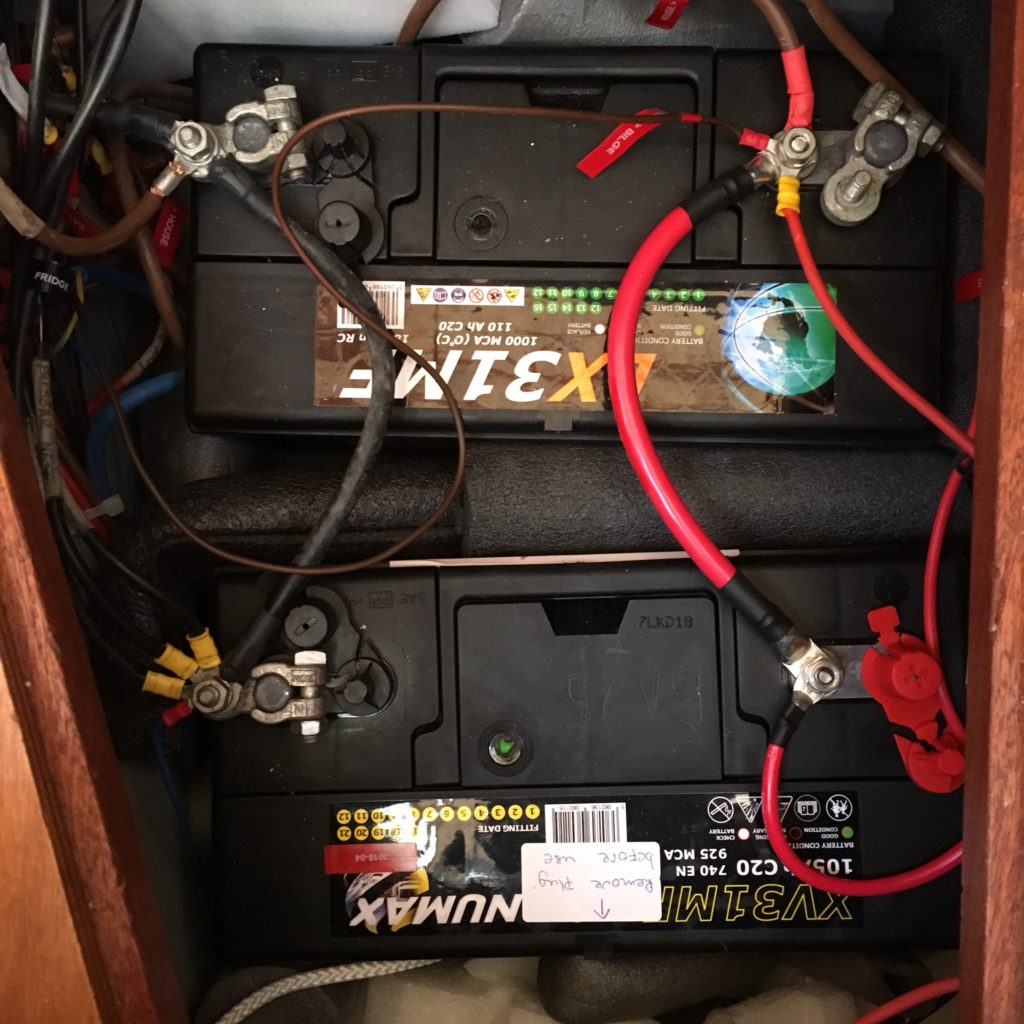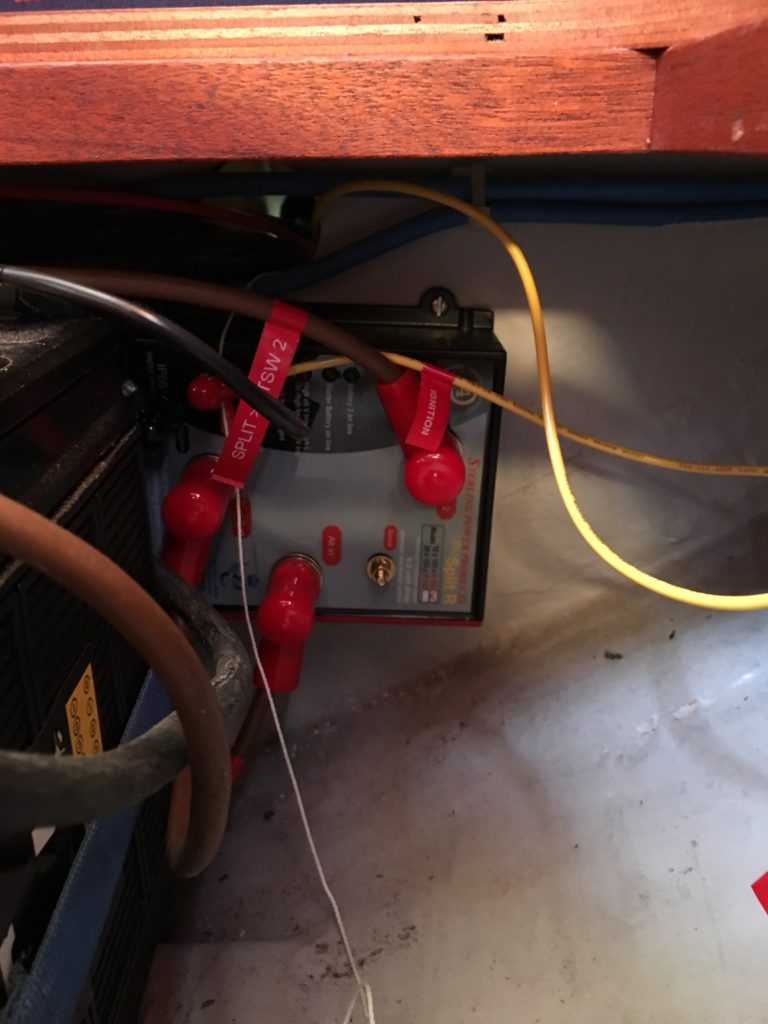Blue Opal is back to two house batteries now, in a parallel arrangement. I ordered a whole bunch of parts from Marine Parts Direct, and a Draper battery terminal crimper from Amazon (the club doesn’t have one, and doing it with a spanner and a hammer didn’t seem right), and have spent some hours over the past week putting things together.
The ProSplit R’s documentation indicates that fusing the runs from the splitter to the battery banks is a good idea, so part of the order was some Blue Sea MIDI safety fuse blocks with 70 and 150 amp fuses (the alternator is the as-shipped Hitachi 35A one). These will take a bit more time to install, as I’ll need to locate good spots in the battery areas to fit them, and get some more wire to hook them up – I’m using a slightly too small mm^2 option right now for the very short run from the fuse to the battery, and I’d like to bring it up to spec to match the existing brown cabling that was used.




I noticed that the house batteries have 8mm stud terminals as well as the older lead terminals, so I’m thinking about using the 8mm studs for the parallel cabling only, and using the lead-to-8mm adapters to carry the connections to the rest of the boat. Need some more 8mm nuts and spring washers for that though, and I didn’t have any when I was working on the boat on Saturday.
With K’s help, I also got the ignition -> ProSplit cable in place. I had initially run it in to the engine bay, but while staring at it and wondering how to ziptie it in place, I twigged that the compressor controls for the fridge didn’t come up the same hole. A quick re-run later, and the cable has been hooked in to the ignition switch, and labeled appropriately with the Dymo label printer.
For the MIDI blocks, I think I’ll mount them on the dividing panel between the house battery locker and the engine battery locker. With the second battery switch for the house bank removed, I should also be able to fit a small ammeter, and possibly even an ammeter/voltmeter combo. Also need cable to extend the Sterling battery charger cabling so that it can attach to the “upstream” side of the fuses – both cables were cut to run to the battery switches, so they’re a bit short.